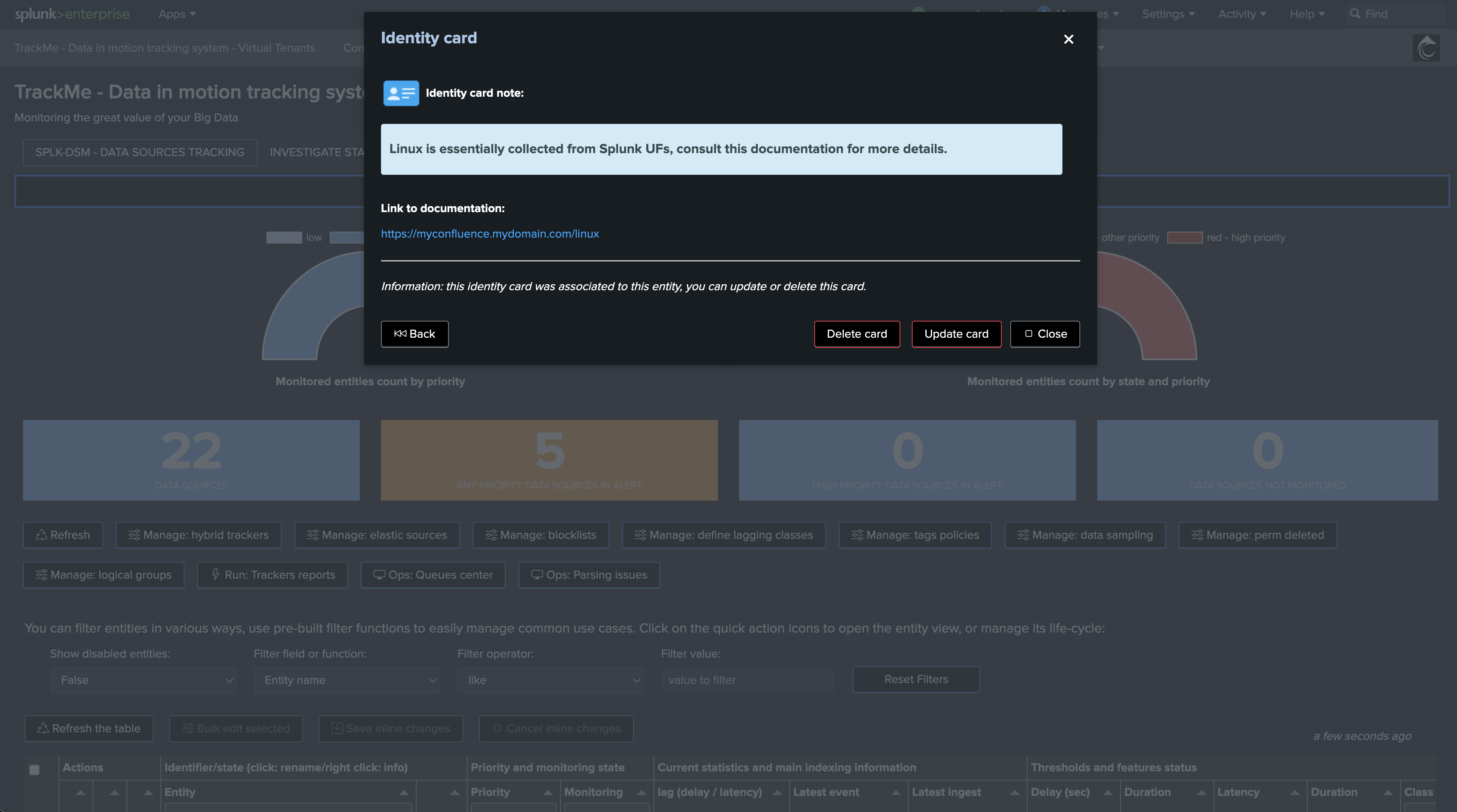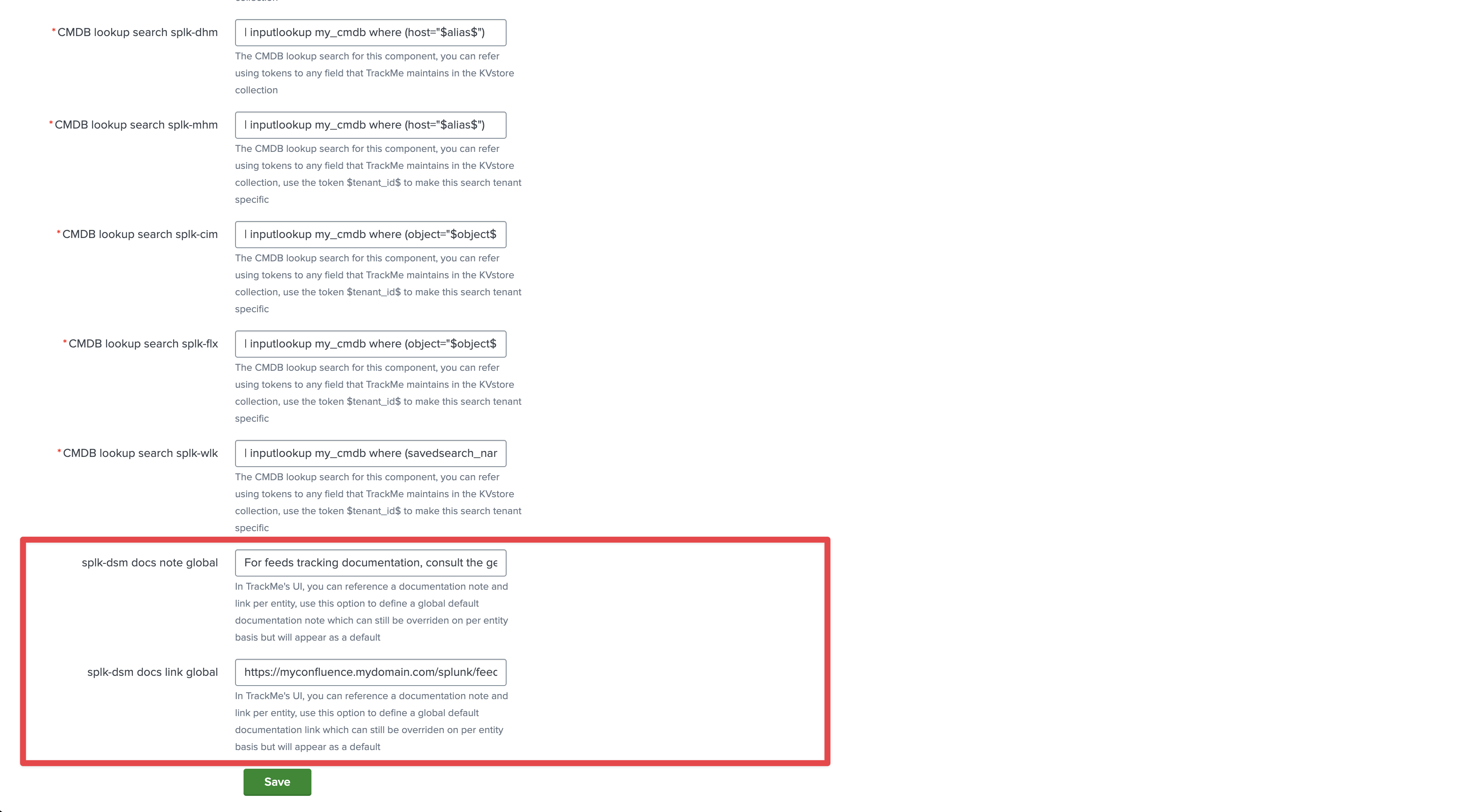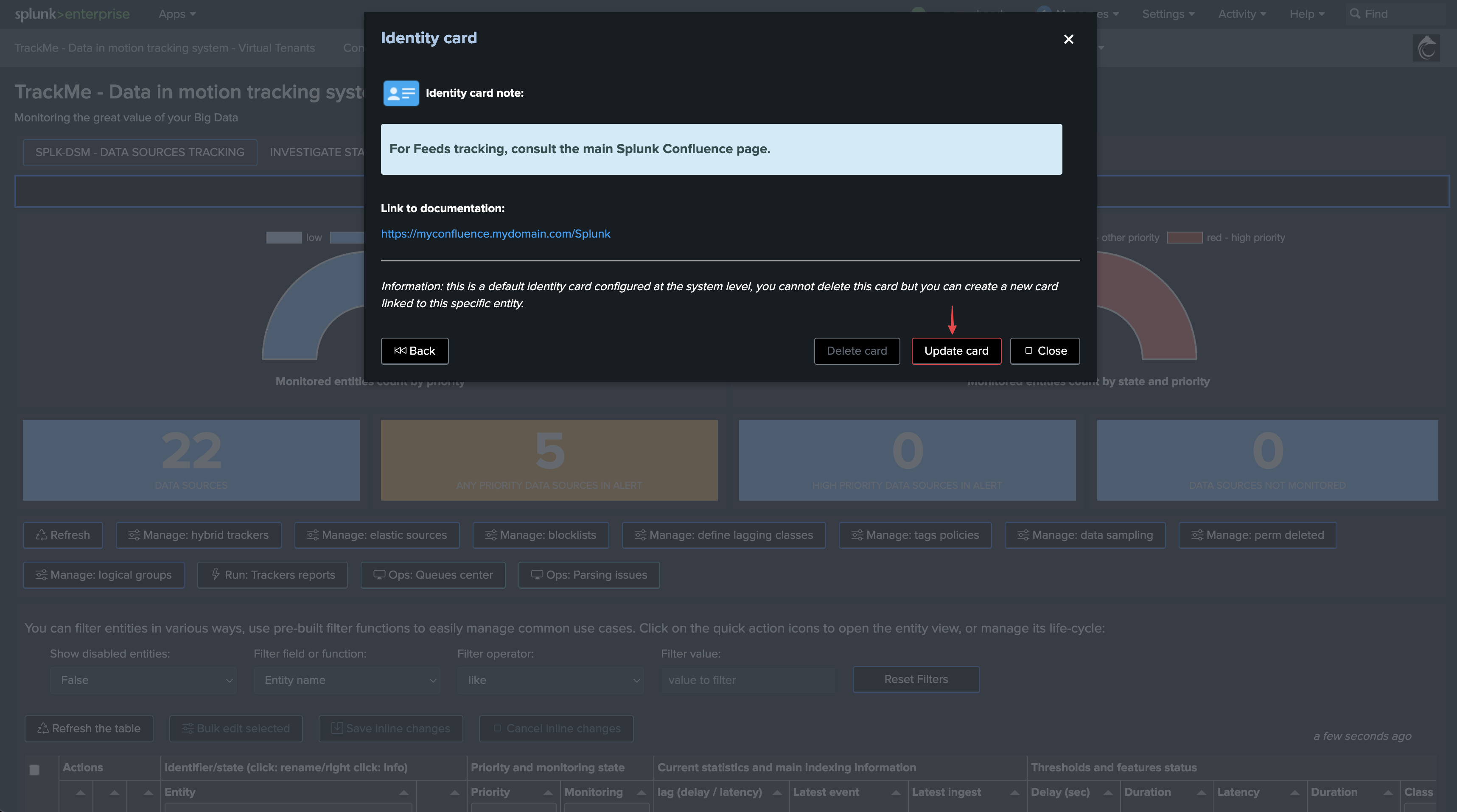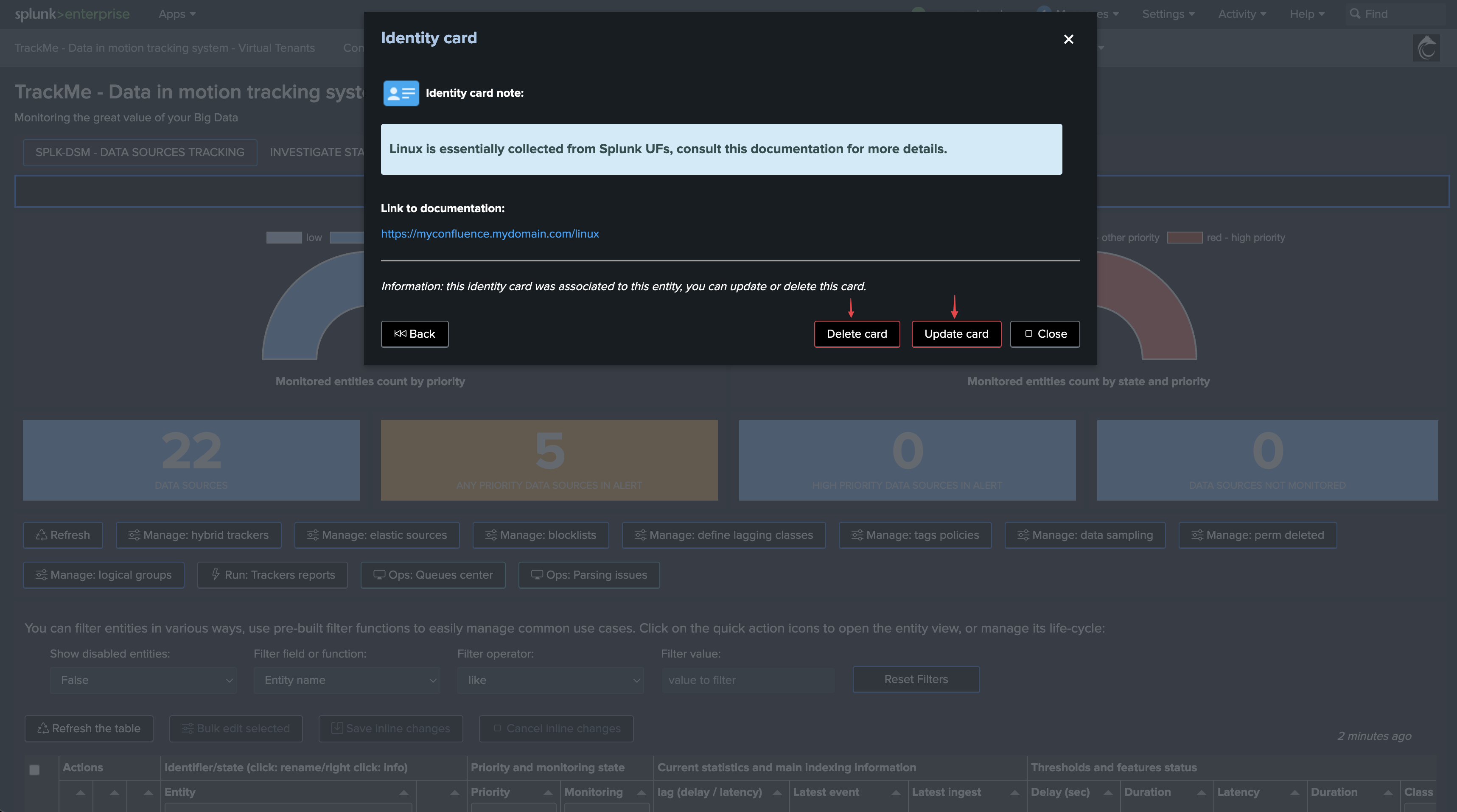Feeds (DataSource - splk-dsm) - Documentation Notes & Links
Introduction to Documentation Notes & Links for splk-dsm
Documentation Notes & Links
The documentation notes for splk-dsm provide easily accessible documentation context directly in the TrackMe UI
This feature is exclusively available for the Data Source tracking component (splk-dsm)
You can define global and default documentation notes and links, which apply to every entity in TrackMe
Additionally, you can define documentation notes and links for individual entities or link them to multiple entities
When both global and entity-specific documentation notes are defined, the entity-specific documentation notes take precedence
Where to Find the Documentation Notes & Links in TrackMe UI
When you open the screen of a specific entity, TrackMe shows at the top of the screen a link referring to documentation notes & links, depending on whether documentation notes have been defined yet (global or per entity):
No documentation notes defined yet:

Documentation notes defined:

If documentation notes are defined, the content would appear as:

If documentation notes are not defined yet, the following screen shows up and allows you to create a new documentation reference, or link to an existing documentation reference:

Defining Global Documentation Notes & Links
To define global documentation notes & links, navigate to the “Configure” screen and select the “splk-general” tab:


Example:


Note that the documentation notes & links defined globally can be overridden on a per-entity basis, so you can still reference specific documentation notes & links for each entity.
Before TrackMe 2.0.87
Prior to this release of TrackMe, the global configuration was managed through several Splunk macros (trackme_identity_card_default_url, trackme_identity_card_default_note)
If you were using this feature before this version, please migrate your configuration to the new global configuration screen
Defining Documentation Notes & Links Per Entity
If a global documentation reference is defined, TrackMe shows an informational message and allows defining an entity-specific documentation reference, or linking to an existing one:

If a specific entity note was defined, however, the screen will allow deleting or updating this reference:

REST API Endpoints
Identity cards are managed through read-only and write REST API endpoints. For detailed usage and examples, consult the REST API Dashboard in TrackMe:
API resource groups:
splk_identity_cards: read-only endpoints (requires trackmeuseroperations capability)splk_identity_cards/write: write endpoints (requires trackmepoweroperations capability)
